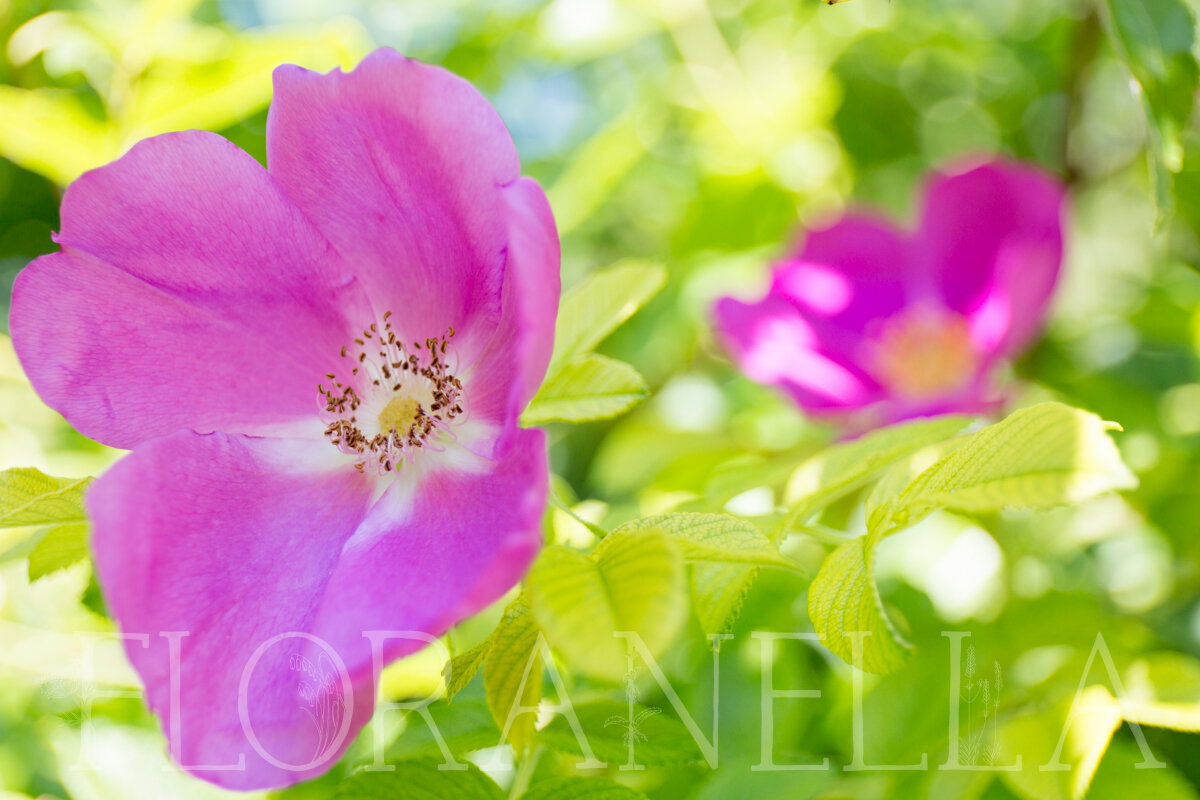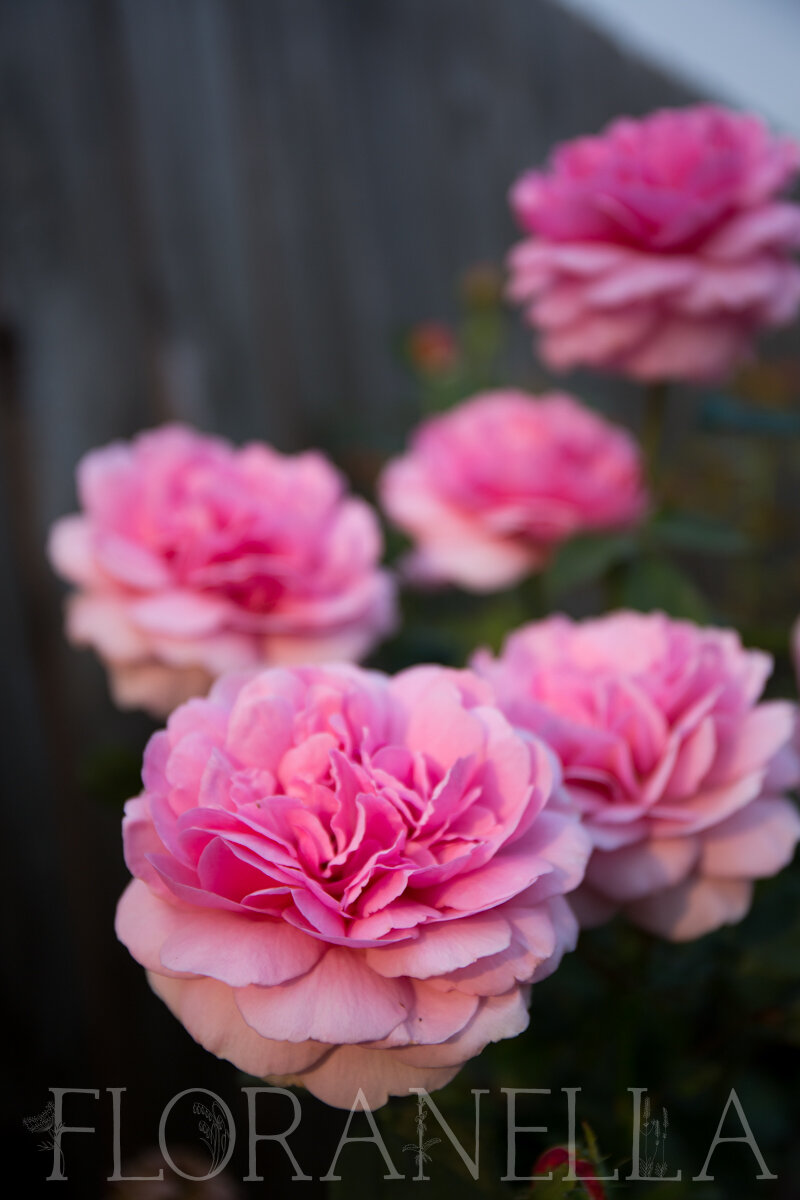My Favorite Roses to Grow for the Apothecary
Roses are some of the most delightful, luscious plants in my garden. They are part of the Rosaceae (rose) plant family and have been charming the hearts of humans for millennia. There are at least 100 different species, though I have seen some sources claim as many as 150 to 300, and there are now so many thousands of cultivated varieties that I would think it would be quite difficult to actually count them all.
The older species (sometimes called “old roses”) are the ones most commonly used in herbalism and aromatherapy, as many of the modern varieties are bred specifically for form and disease resistance, often at the expense of aroma. We need potent roses to make effective rose remedies, so strongly fragrant roses are key for the aromatic gardener.
Some of the most common species utilized in herbalism and aromatherapy include:
Rosa x damascena (damask rose)
Rosa x centifolia (cabbage rose)
Rosa rugosa (rugosa rose)
Rosa alba (white rose)
Rosa canina (dog rose)
Rosa gallica (apothecary rose)
Rosa nutkana (nootka rose)
Rosa rubiginosa (sweet briar rose)
Rosa virginiana (common wild rose)
Rosa woodsii (Wood’s rose)
I grow several different species and varieties of roses, but there are definitely a few that are my favorites for the apothecary.
Dual-Purpose Repeat Bloomers
My absolute favorites are dual-purpose repeat bloomers. When a rose is a repeat bloomer, this means that the plant will bloom all season long. For my area, that means the rose will bloom continuously or in multiple flushes from late April to early May all the way through to the first frost in October or November. When the rose species also makes tasty hips in addition to their usable aromatic blooms, I consider that species to be a dual-purpose rose. Not all roses produce hips that taste good, so some are only useful for their other plant parts.
Many of the rose species that are highly fragrant and suitable for use in the apothecary are old roses that are once blooming. This means that they produce a single flush of flowers in May or June and then are finished blooming for the year. The roses that are often distilled for their essential oil, including Rosa x damascena, Rosa x centifolia, and Rosa alba, are once blooming rose species. So is Rosa gallica, the classic apothecary rose.
I grow several once-bloomers and they are lovely, but my most productive, vigorous plants tend to be the repeat blooming Rosa rugosa roses. If I could only grow one kind of rose for my apothecary, it would probably be a rugosa rose. The plants are vigorous, healthy, produce beautifully fragrant flowers that make lovely hydrosols, and their hips are delicious and larger than some of the hips produced by other species. My favorite variety is a double-flowered (which means that it has more petals) variety with bright, rich pink petals. It sends its classic rose fragrance all through my garden when it is blooming.
I harvest the petals from my rugosa roses all season long. It seems like my drying racks are always filled with them. Six plants produce more than enough for my own apothecary use in teas, food, remedies, tinctures, skin care, etc. and for hydrosol making, with enough to share with friends and clients too.
Tip: Once summer arrives, harvest only the petals of the roses and leave behind the stamens. The bees will continue to visit the roses even without the petals and will pollinate the hips you have left behind so you will have a delicious harvest of rose hips in the fall!
Highly Fragrant Once-Bloomers
The once-blooming old roses, including the ones mentioned above, are often highly fragrant. They make beautiful essential oils and hydrosols and, once established, can produce masses of blooms. They are absolutely beautiful and have strong, rich aromas, which is why they are usually preferred for essential oil distillation.
As I mentioned, I do grow a few of them. With my limited garden space, however, I have found that I prefer to grow the rugosa roses because they produce larger, tastier hips and I can harvest their flowers multiple times throughout the season. The once-blooming roses tend to have smaller, less tasty hips and I can only harvest from them for a short period during the growing season.
Since I do not currently have sufficient space to grow enough of these special roses to be able to distill them for their essential oil, I prefer the dual purpose rugosa roses for now. Someday, though, I would love to be able to grow more of these. If you have limited space, you might prefer the rugosa roses as well but if you have room, I encourage you to plant at least one of these classic, old once-blooming species. They are truly delightful.
Most of the hybridized roses, including the tea roses and floribundas, are not fragrant enough to be useful in the apothecary. However, all roses have edible petals that you could add to salads or use for making infused honeys or baked goods if you are growing the plants organically. Some of my favorite garden roses that are not necessarily as useful in the apothecary are the David Austin roses.
David Austin Roses
I love David Austin's roses. They are full and lush and beautiful, some with hundreds of petals and a wide variety of glorious color combinations. If you want to try a David Austin rose for your garden, I recommend looking for the varieties that will do well in your area and that are both very healthy and "exceptionally fragrant." (You can search their catalog by fragrance strength and disease resistance.) You may find that even one of the more modern varieties can be suitable for some apothecary uses if you are able to find one that has a strong scent. I added their Munstead Wood variety, bred by David Austin, to my garden a few years ago and I am finding it to be quite lovely.
Other Ornamental Roses
Roses are all edible, but not all roses are equally medicinal. I think it is important to note that you do not want to use store-bought or florist-bought roses in your food or apothecary. Most cut roses are heavily sprayed with biocides and chemicals that you would not want to ingest.
Note: Darker colored rose petals will hold their color best when dried, whereas lighter petals might take on a more tea-stained hue.
Growing Roses
Rose hardiness depends somewhat on the species. Some require warmer growing zones while others might be hardy down to a zone 5 or even a zone 3. If you are having trouble finding a rose that will work for you, try checking in with your local native plants society to see which species is / are native in your area. You can also check with local garden centers to see what they recommend, though you will want to specify that you are looking for old rose species.
Roses can be pruned in mid-winter (I usually try to prune mine in January or February before they start to develop buds). There are some excellent rose pruning tutorials available on Youtube. Note that you want to prune climbing roses a little differently than shrub roses, so approach your plants accordingly. Throughout the season, dead-heading the roses will encourage repeat blooming species to keep producing flowers.
There are so many beautiful roses to grow. Which varieties are your favorites? Let me know in the comments below. I would love to hear about which ones you love.
Much love,
Erin
About the Author
Hi there, I’m Erin! I am the main instructor here at Floranella. I am a clinical herbalist, aromatherapist, artisan distiller and organic gardener based in the Pacific Northwest. Here at Floranella, I teach people how to work with plants safely and effectively from the garden to the apothecary. Thanks for being here! I’m glad you stopped by.









